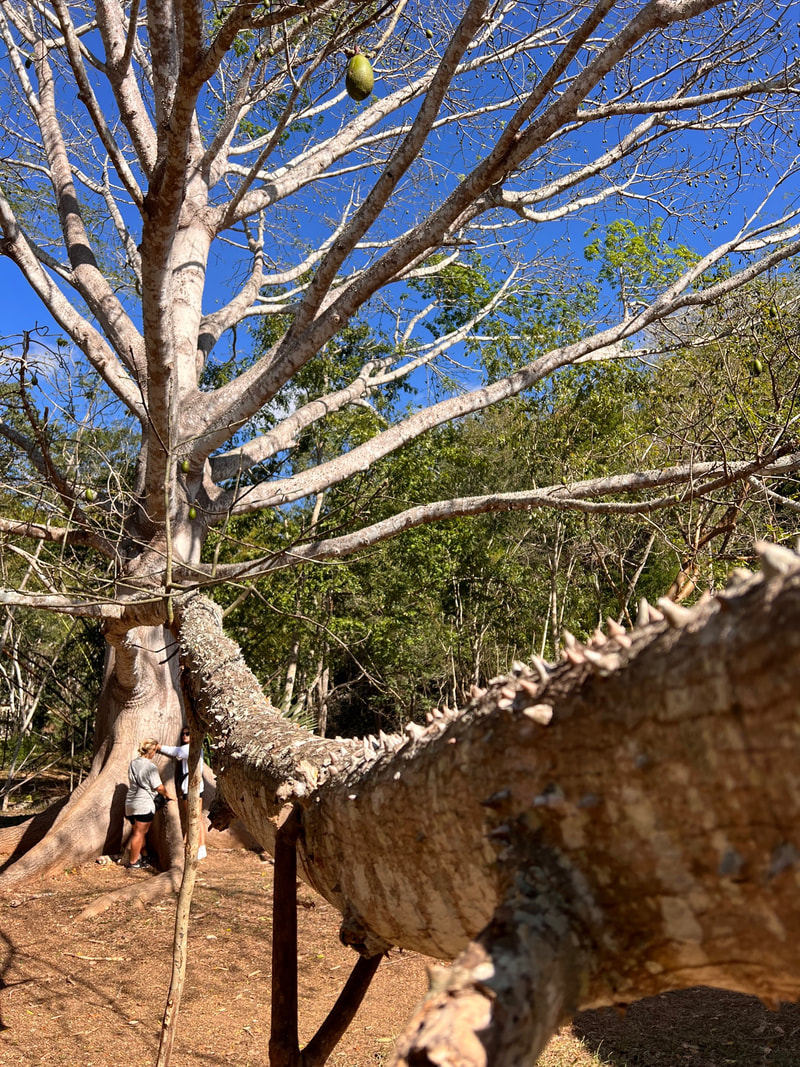Hipil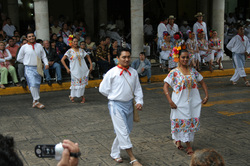
Hipil: i
The hipil dress is a traditional garment worn by Mayan women in Mexico and Central America. It is a long, loose-fitting dress made of lightweight cotton fabric and embroidered with colorful designs. The hipil is often decorated with intricate embroidery around the neckline and hem, and some designs incorporate geometric patterns, animals, or other symbols that hold cultural significance. The hipil dress is an important part of Mayan cultural identity and has been worn for centuries. Mayan women wear hipil dresses as everyday attire, for special occasions such as weddings and religious ceremonies, and as a symbol of their heritage and cultural pride. The hipil dress is typically made by hand, with the embroidery often done by the women who will wear the dress. The techniques used to make hipil dresses vary by region and community, but generally involve a combination of sewing, embroidery, and weaving. In addition to being a cultural symbol, the hipil dress also serves a practical purpose in hot, humid climates. The loose-fitting design allows for air circulation, and the lightweight fabric is comfortable to wear in the heat. Today, the hipil dress remains an important part of Mayan culture and is often worn as a symbol of pride and identity. The traditional techniques used to make hipil dresses are also preserved and passed down through generations, helping to maintain Mayan cultural traditions. |
Papad zules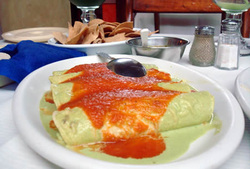
Papad zules: Papadzules (Spanish pronunciation:
<ˌpapaˈtsules>) (Mexican Spanish, from Mayan IPA: <papatsʼu:les>) is a traditional dish from the Yucatan Peninsula resembling enchiladas. In its simplest form it consists of corn tortillas dipped in a sauce of pepita (pumpkin seeds) filled with hard-boiled eggs, and garnished with a cooked tomato-chile sauce. Henequen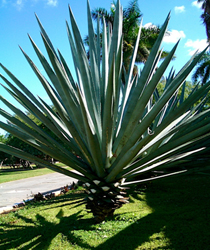
Henequen: Henequen (Agave fourcroydes Lem.) is an agave whose leaves yield a fiber also called henequen which is suitable for rope and twine, but not of as high a quality as sisal. Alternative spellings are Henequin and Heniquen. It is the major plantation fiber agave of eastern
Mexico, being grown extensively in Yucatán, Veracruz, and southern Tamaulipas. It is also used to make Licor del henequén, a traditional Mexican alcoholic drink.The plant appears as a rosette of sword-shaped leaves 1.2 to 1.8 meters long, growing out of a thick stem that may reach 1.7 meters (5 ft). The leaves have regularly spaced teeth 3-6 mm long, and a terminal spine 2-3 cm long.Like the sisal, A. fourcroydes is a sterile hybrid; the ovaries never produce seeds. The plant does produce bulbils that may be planted, but commercial growers prefer to use the frequent suckers, which develop more quickly. |
Xilbalba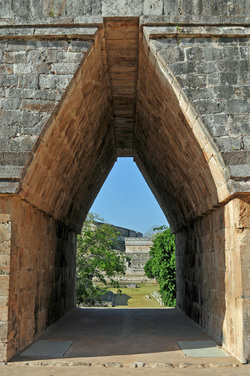
Xibalba: In Maya mythology, Xibalba ( /ʃɪˈbɒlbə/), roughly translated as "place of fear",<1> is the name of the underworld, ruled by Maya Death Gods and their helpers. In Yucatec, it was known as Metnal. In the 16th-century Verapaz, the entrance to Xibalba was traditionally held to be a cave in the vicinity of Cobán, Guatemala.
According to some of the K'iche' Maya presently living in the vicinity, the area is still associated with death. Cave systems in nearby Belize have also been referred to as the entrance to Xibalba as well the just discover cenote in Chiche-Itza. Tacos de cochinita pibil
Cochinita pibil is a traditional Mexican slow-roasted pork dish from the Yucatán Península. Preparation of traditional
cochinita or puerco pibil involves marinating the meat in strongly acidic citrus juice, coloring it with annatto seed, and roasting the meat while it is wrapped in banana leaf. |
|
Cenote
Cenotes are natural sinkholes or limestone sinkholes that are found in the Yucatan Peninsula in Mexico and other parts of the world. They are important geological features that are unique to this area and have played an important role in the culture and history of the Mayan people. The Mayan people, who are indigenous to the region, considered cenotes to be sacred and believed that they were gateways to the underworld. They used them for a variety of purposes, including as a source of fresh water, for religious and spiritual ceremonies, and as a place to dispose of offerings and sacrifices. Cenotes were also important for the survival of the Mayan people, as they provided a source of fresh water in an otherwise dry and arid landscape. The water was also used for irrigation and to support agriculture, which was a vital part of the Mayan economy. Today, cenotes are popular tourist attractions and are widely used for swimming, snorkeling, and scuba diving. Many of the cenotes have been developed as tourist destinations, with amenities such as changing rooms, restrooms, and restaurants. Despite the commercialization of some cenotes, they continue to hold significant cultural and spiritual importance for the Mayan people, and many traditional practices and ceremonies still take place around them. |
Ceiba tree - Kapok tree
|
